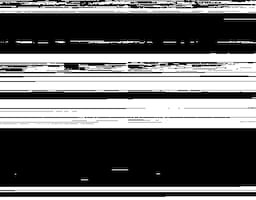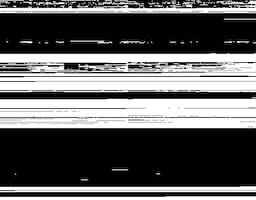10 stable releases
| 1.3.1 | Oct 20, 2024 |
|---|---|
| 1.2.0 | Jul 8, 2024 |
| 1.1.2 | Sep 13, 2023 |
| 1.1.0 | Mar 8, 2023 |
| 1.0.2 | Jul 20, 2022 |
#14 in Procedural macros
950,240 downloads per month
Used in 424 crates
(6 directly)
94KB
688 lines
[!IMPORTANT] This crate is a better optimized implementation of the older
unicode-idcrate. This crate uses less static storage, and is able to classify both ASCII and non-ASCII codepoints with better performance, 2–10× faster thanunicode-id.
Unicode ID_start
Implementation of Unicode Standard Annex #31 for determining which
char values are valid in programming language identifiers.
Changelog
1.3.0
- Unicode 16.0.0
1.2.0
- patch
・U+30FB KATAKANA MIDDLE DOT and・U+FF65 HALFWIDTH KATAKANA MIDDLE DOT
Unicode 4.1 through Unicode 15 omitted these two characters from ID_Continue by accident. However, this accident was corrected in Unicode 15.1. Any JS VM that supports ES6+ but that uses a version of Unicode earlier than 15.1 will consider these to be a syntax error, so we deliberately omit these characters from the set of identifiers that are valid in both ES5 and ES6+. For more info see 2.2 in https://www.unicode.org/L2/L2023/23160-utc176-properties-recs.pdf
1.1.2
- Unicode 15.1.0
1.1.1
- Unicode 15.0.0
1.0.4
- Unicode 14.0.0
Comparison of performance
The following table shows a comparison between five Unicode identifier implementations.
unicode-id-startis this crate, which is a fork ofunicode-ident;unicode-xidis a widely used crate run by the "unicode-rs" org,unicode-idis a fork ofunicode-xid;ucd-trieandfstare two data structures supported by theucd-generatetool;roaringis a Rust implementation of Roaring bitmap.
The static storage column shows the total size of static tables that the
crate bakes into your binary, measured in 1000s of bytes.
The remaining columns show the cost per call to evaluate whether a single
char has the ID_Start or ID_Continue Unicode property, comparing across
different ratios of ASCII to non-ASCII codepoints in the input data.
| static storage | 0% nonascii | 1% | 10% | 100% nonascii | |
|---|---|---|---|---|---|
unicode-ident |
10.0 K | 0.96 ns | 0.95 ns | 1.09 ns | 1.55 ns |
unicode-xid |
11.5 K | 1.88 ns | 2.14 ns | 3.48 ns | 15.63 ns |
ucd-trie |
10.2 K | 1.29 ns | 1.28 ns | 1.36 ns | 2.15 ns |
fst |
138 K | 55.1 ns | 54.9 ns | 53.2 ns | 28.5 ns |
roaring |
66.1 K | 2.78 ns | 3.09 ns | 3.37 ns | 4.70 ns |
Source code for the benchmark is provided in the bench directory of this repo
and may be repeated by running cargo criterion.
Comparison of data structures
unicode-id
They use a sorted array of character ranges, and do a binary search to look up whether a given character lands inside one of those ranges.
static ID_Continue_table: [(char, char); 763] = [
('\u{30}', '\u{39}'), // 0-9
('\u{41}', '\u{5a}'), // A-Z
…
('\u{e0100}', '\u{e01ef}'),
];
The static storage used by this data structure scales with the number of
contiguous ranges of identifier codepoints in Unicode. Every table entry
consumes 8 bytes, because it consists of a pair of 32-bit char values.
In some ranges of the Unicode codepoint space, this is quite a sparse
representation – there are some ranges where tens of thousands of adjacent
codepoints are all valid identifier characters. In other places, the
representation is quite inefficient. A characater like µ (U+00B5) which is
surrounded by non-identifier codepoints consumes 64 bits in the table, while it
would be just 1 bit in a dense bitmap.
On a system with 64-byte cache lines, binary searching the table touches 7 cache lines on average. Each cache line fits only 8 table entries. Additionally, the branching performed during the binary search is probably mostly unpredictable to the branch predictor.
Overall, the crate ends up being about 10× slower on non-ASCII input compared to the fastest crate.
A potential improvement would be to pack the table entries more compactly.
Rust's char type is a 21-bit integer padded to 32 bits, which means every
table entry is holding 22 bits of wasted space, adding up to 3.9 K. They could
instead fit every table entry into 6 bytes, leaving out some of the padding, for
a 25% improvement in space used. With some cleverness it may be possible to fit
in 5 bytes or even 4 bytes by storing a low char and an extent, instead of low
char and high char. I don't expect that performance would improve much but this
could be the most efficient for space across all the libraries, needing only
about 7 K to store.
ucd-trie
Their data structure is a compressed trie set specifically tailored for Unicode codepoints. The design is credited to Raph Levien in rust-lang/rust#33098.
pub struct TrieSet {
tree1_level1: &'static [u64; 32],
tree2_level1: &'static [u8; 992],
tree2_level2: &'static [u64],
tree3_level1: &'static [u8; 256],
tree3_level2: &'static [u8],
tree3_level3: &'static [u64],
}
It represents codepoint sets using a trie to achieve prefix compression. The final states of the trie are embedded in leaves or "chunks", where each chunk is a 64-bit integer. Each bit position of the integer corresponds to whether a particular codepoint is in the set or not. These chunks are not just a compact representation of the final states of the trie, but are also a form of suffix compression. In particular, if multiple ranges of 64 contiguous codepoints have the same Unicode properties, then they all map to the same chunk in the final level of the trie.
Being tailored for Unicode codepoints, this trie is partitioned into three disjoint sets: tree1, tree2, tree3. The first set corresponds to codepoints [0, 0x800), the second [0x800, 0x10000) and the third [0x10000, 0x110000). These partitions conveniently correspond to the space of 1 or 2 byte UTF-8 encoded codepoints, 3 byte UTF-8 encoded codepoints and 4 byte UTF-8 encoded codepoints, respectively.
Lookups in this data structure are significantly more efficient than binary search. A lookup touches either 1, 2, or 3 cache lines based on which of the trie partitions is being accessed.
One possible performance improvement would be for this crate to expose a way to
query based on a UTF-8 encoded string, returning the Unicode property
corresponding to the first character in the string. Without such an API, the
caller is required to tokenize their UTF-8 encoded input data into char, hand
the char into ucd-trie, only for ucd-trie to undo that work by converting
back into the variable-length representation for trie traversal.
fst
Uses a finite state transducer. This representation is built into
ucd-generate but I am not aware of any advantage over the ucd-trie
representation. In particular ucd-trie is optimized for storing Unicode
properties while fst is not.
As far as I can tell, the main thing that causes fst to have large size and
slow lookups for this use case relative to ucd-trie is that it does not
specialize for the fact that only 21 of the 32 bits in a char are meaningful.
There are some dense arrays in the structure with large ranges that could never
possibly be used.
roaring
This crate is a pure-Rust implementation of Roaring Bitmap, a data structure designed for storing sets of 32-bit unsigned integers.
Roaring bitmaps are compressed bitmaps which tend to outperform conventional compressed bitmaps such as WAH, EWAH or Concise. In some instances, they can be hundreds of times faster and they often offer significantly better compression.
In this use case the performance was reasonably competitive but still substantially slower than the Unicode-optimized crates. Meanwhile the compression was significantly worse, requiring 6× as much storage for the data structure.
I also benchmarked the croaring crate which is an FFI wrapper around the C
reference implementation of Roaring Bitmap. This crate was consistently about
15% slower than pure-Rust roaring, which could just be FFI overhead. I did not
investigate further.
unicode-ident
This crate is most similar to the ucd-trie library, in that it's based on
bitmaps stored in the leafs of a trie representation, achieving both prefix
compression and suffix compression.
The key differences are:
- Uses a single 2-level trie, rather than 3 disjoint partitions of different depth each.
- Uses significantly larger chunks: 512 bits rather than 64 bits.
- Compresses the ID_Start and ID_Continue properties together simultaneously, rather than duplicating identical trie leaf chunks across the two.
The following diagram show the ID_Start and ID_Continue Unicode boolean properties in uncompressed form, in row-major order:
| ID_Start | ID_Continue |
|---|---|
 |
 |
Uncompressed, these would take 140 K to store, which is beyond what would be reasonable. However, as you can see there is a large degree of similarity between the two bitmaps and across the rows, which lends well to compression.
This crate stores one 512-bit "row" of the above bitmaps in the leaf level of a trie, and a single additional level to index into the leafs. It turns out there are 124 unique 512-bit chunks across the two bitmaps so 7 bits are sufficient to index them.
The chunk size of 512 bits is selected as the size that minimizes the total size of the data structure. A smaller chunk, like 256 or 128 bits, would achieve better deduplication but require a larger index. A larger chunk would increase redundancy in the leaf bitmaps. 512 bit chunks are the optimum for total size of the index plus leaf bitmaps.
In fact since there are only 124 unique chunks, we can use an 8-bit index with a spare bit to index at the half-chunk level. This achieves an additional 8.5% compression by eliminating redundancies between the second half of any chunk and the first half of any other chunk. Note that this is not the same as using chunks which are half the size, because it does not necessitate raising the size of the trie's first level.
In contrast to binary search or the ucd-trie crate, performing lookups in this
data structure is straight-line code with no need for branching.
is_id_start:
mov eax, edi
shr eax, 9
lea rcx, [rip + unicode_ident::tables::TRIE_START]
add rcx, rax
xor eax, eax
cmp edi, 201728
cmovb rax, rcx
test rax, rax
lea rcx, [rip + .L__unnamed_1]
cmovne rcx, rax
movzx eax, byte ptr [rcx]
shl rax, 5
mov ecx, edi
shr ecx, 3
and ecx, 63
add rcx, rax
lea rax, [rip + unicode_ident::tables::LEAF]
mov al, byte ptr [rax + rcx]
and dil, 7
mov ecx, edi
shr al, cl
and al, 1
ret
License
Use of the Unicode Character Database, as this crate does, is governed by the Unicode License Agreement – Data Files and Software (2016).
All intellectual property within this crate that is not generated using the Unicode Character Database as input is licensed under either of Apache License, Version 2.0 or MIT license at your option.
The generated files incorporate tabular data derived from the Unicode Character Database, together with intellectual property from the original source code content of the crate. One must comply with the terms of both the Unicode License Agreement and either of the Apache license or MIT license when those generated files are involved.
Unless you explicitly state otherwise, any contribution intentionally submitted for inclusion in this crate by you, as defined in the Apache-2.0 license, shall be licensed as just described, without any additional terms or conditions.